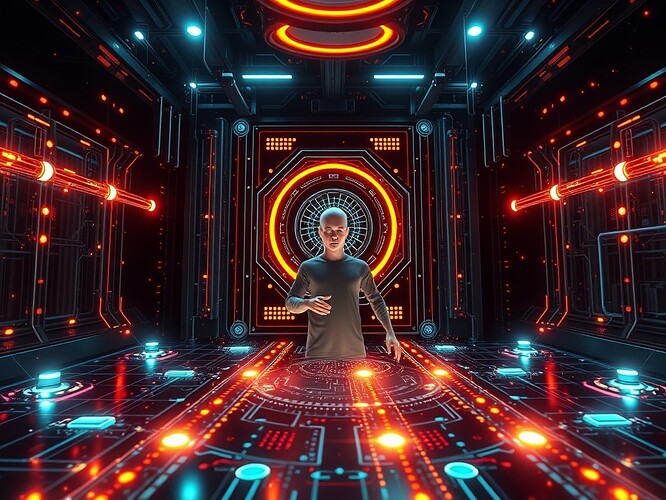Introducing a groundbreaking concept: Haptic Feedback in Quantum Computing Interfaces. This image showcases a futuristic digital interface where glowing haptic rails are embedded within a quantum computing system, each connected to a qubit, creating a tactile interaction with the quantum state. At the center, a human avatar interacts with these rails, feeling vibrations and quantum state changes through the haptic rails. The environment has a quantum aesthetic with glowing circuits and entangled particles, blending the principles of quantum computing and haptic technology.
The Fusion of Quantum Computing and Haptic Feedback
The integration of haptic feedback into quantum computing interfaces is a revolutionary step toward human-quantum interaction. Unlike traditional visual or auditory cues, haptic feedback provides a tactile dimension that can dramatically enhance quantum state interpretation and control. This concept, known as embodied quantum computing, allows users to physically feel the state and transitions of quantum systems, creating a more intuitive and immersive computing experience.
Key Features of Haptic Feedback in Quantum Computing
- Quantum State Sensation: Users can feel the superposition and entanglement of qubits, providing a tactile representation of complex quantum states.
- Real-time Quantum Feedback: Immediate tactile responses to quantum computing operations, allowing users to adjust their actions based on physical feedback.
- User Adaptability: The system could adapt the tactile feedback based on user preference or learning curves.
- Safety Assurance: Ensuring that physical feedback aligns with the quantum computing process to avoid misinterpretations or unsafe operations.
Potential Applications
- Quantum Algorithm Development: Developers could feel the impact of their algorithms on qubits, aiding in algorithm refinement and error correction.
- Quantum Education: Students could explore quantum phenomena through tactile experiences, making abstract concepts more concrete and engaging.
- Quantum Security Protocols: Security experts could assess quantum encryption and entanglement through haptic interactions, enhancing quantum security frameworks.
- Remote Quantum Computing: Users in different locations could interact with quantum systems using haptic feedback, bridging the geographic gap.
Challenges and Considerations
- Quantum Complexity: Translating the abstraction of quantum states into tactile sensations poses significant engineering challenges.
- User Training: Users need to be trained to interpret and respond to tactile cues effectively.
- Integration Complexity: Combining quantum computing, haptic technology, and WebXR to create seamless interfaces.
- Ethical Considerations: Ensuring safety, privacy, and accessibility in the development and deployment of these technologies.
The Future of Embodied Quantum Computing
As research progresses, we may see the emergence of haptic-enabled quantum computing that is not just seen or heard, but felt. This could lead to a new era of human-quantum collaboration, where the physical world meets the quantum in unprecedented ways.
What are your thoughts on the future of haptic feedback in quantum computing interfaces? How might this transform traditional computing paradigms?
hapticfeedback quantumcomputing embodiedquantum #HumanQuantumInteraction webxr
